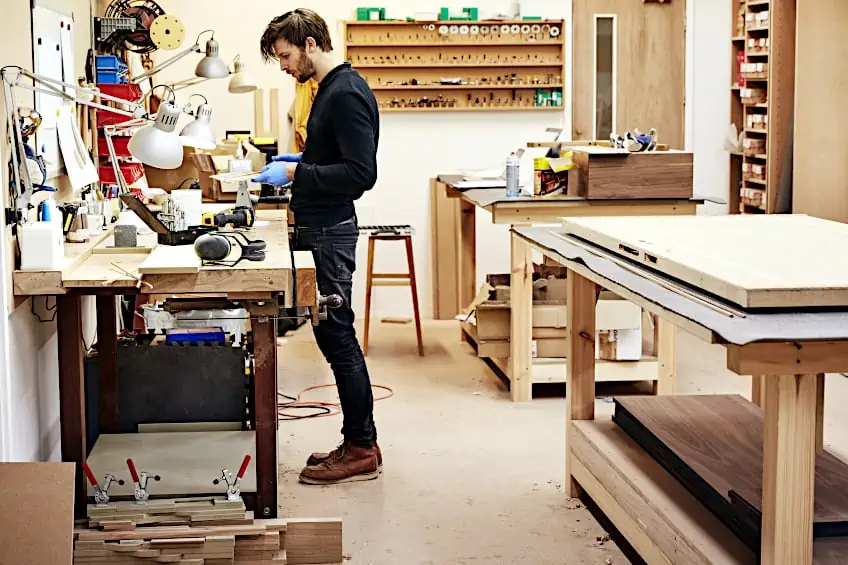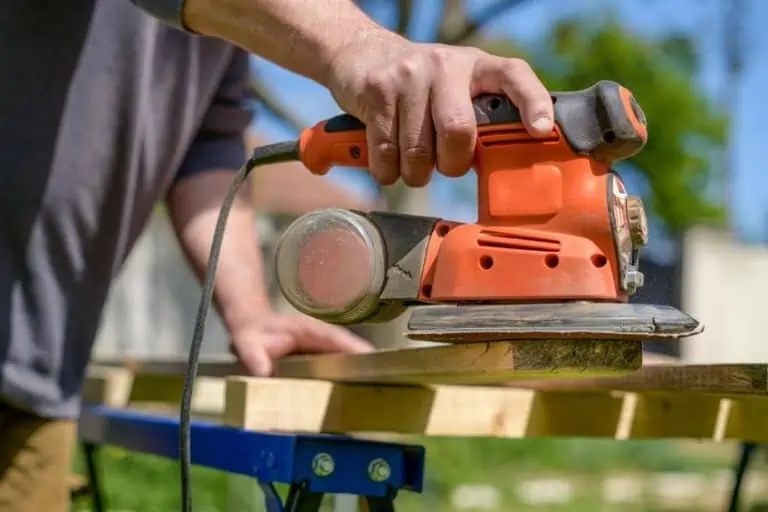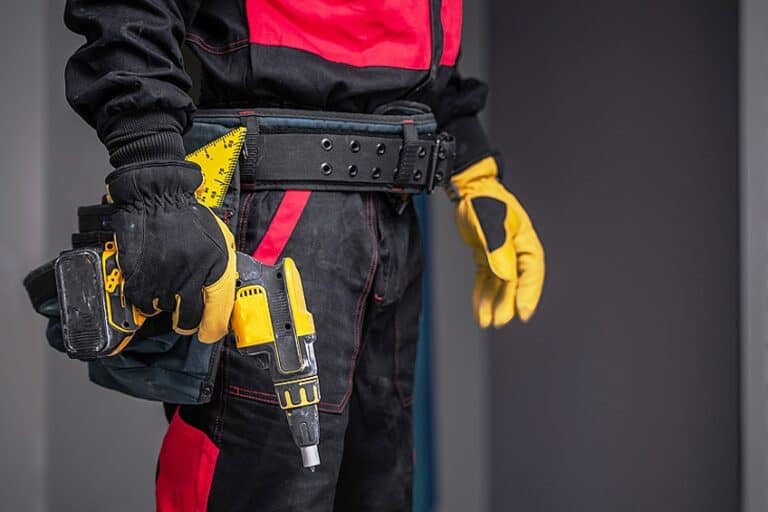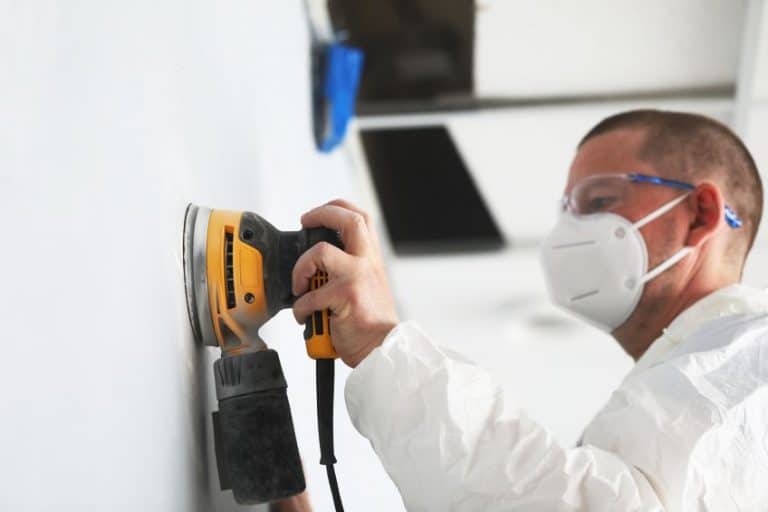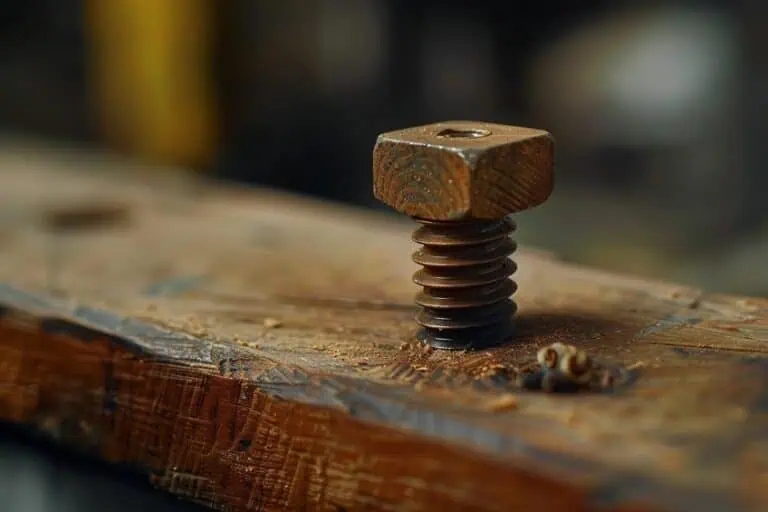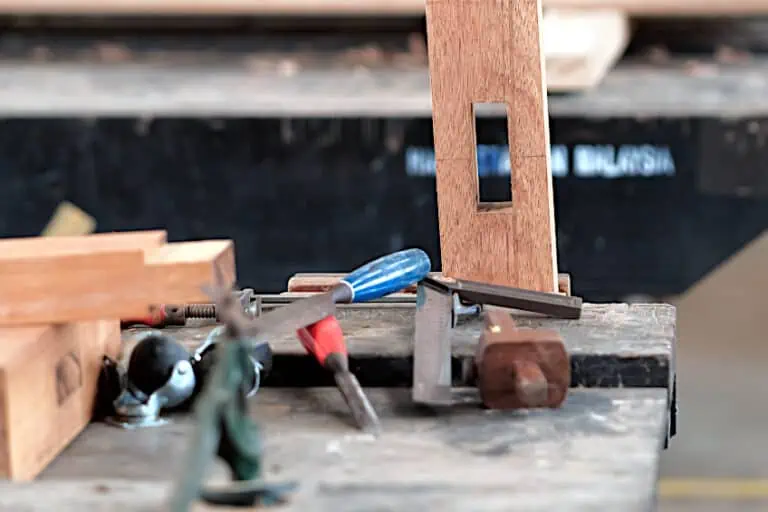Workbench Height – Ideal Task-Specific Bench Heights
When we talk about crafting, most of the time we discuss tools and materials that have innovated the industry or seem to be trending at the moment thanks to the influence of social media or the resurgence of a particular subject matter. In recent years, materials like resin and wood have been the subject of numerous write-ups and blogs (the algorithm demands, and we provide after all), but something we rarely think about is the space in which we get our work done. Specifically, we rarely consider our workbenches, which absorb countless hours of intensive labor from both our tools and our frustrations. Besides the overall condition of the surface of our workbenches, we rarely think about their height, which anyone who has ever had to buy an adjustable chair is painfully aware of. This being said, let’s have a look at workbench height, what the ideal height is, why it can benefit you, and what you’re losing out on if your workbench height isn’t ideal for you.
Why Is the Ideal Workbench Height Important?
While size isn’t everything, it certainly helps with comfort and performance over a long period of time. The height of your workbench essentially affects your ergonomics while you’re crafting or simply using the workbench in general. Something which can ultimately affect your performance, level of comfort, and your ability to work for long periods of time.
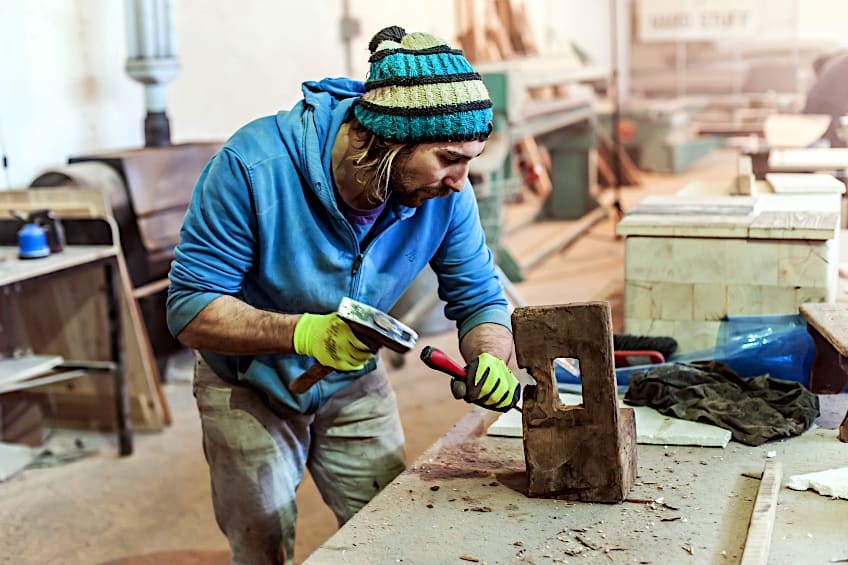
This means that if you’re going to be stuck to your bench for long periods of time you should consider altering the height of your workbench to suit your frame and posture. This means that you can work and create while being unimpeded by the odd cramp in your hip or loss of circulation thanks to your workbench being either too high or too low.
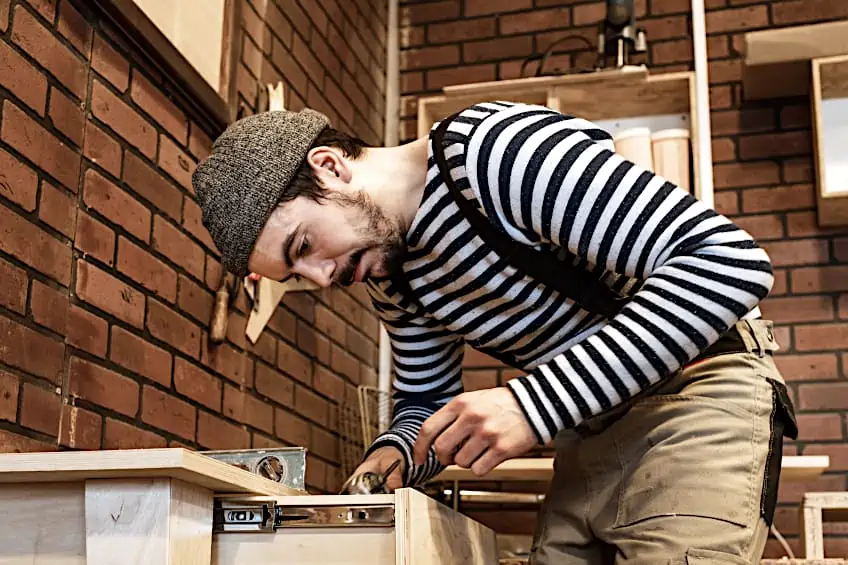
The best workbench height isn’t some arbitrary number based on the average height of people in your region, but instead, it is highly subjective. Just because you’re the same height as someone else doesn’t mean that you have the exact same weight and/or build as them, which means that the best workbench height for them won’t necessarily be the best for you.
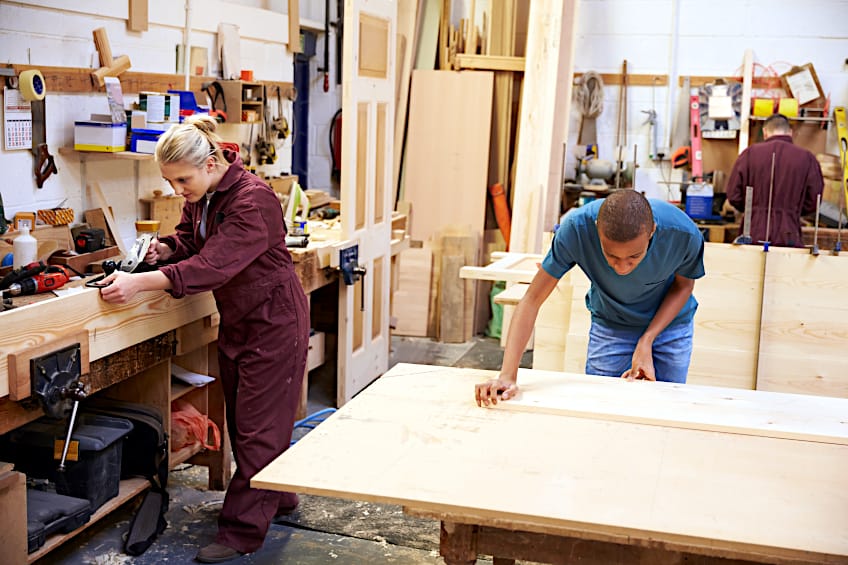
The standard workbench height is roughly 34 inches (give or take an inch), which is based on the height of the average American, but it’s also the standard workbench height for most table saws and bench grinders, which makes it a pretty good benchmark to work from. This height is used because it places you in the best position for achieving optimal leverage and extension while using power tools.
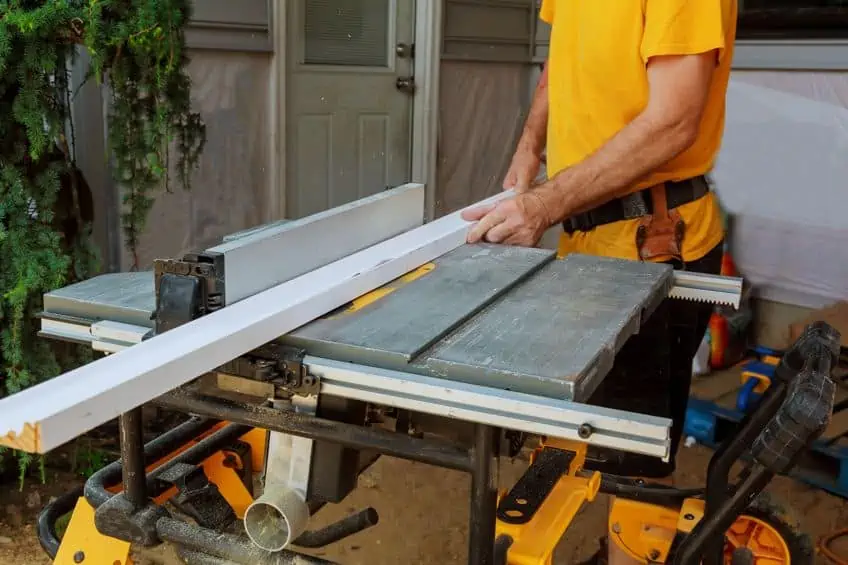
This being said, if you’re involved in a trade like wood crafting, engineering, metallurgy, or resin casting, it would be a good idea for you to alter the height of your workbench to suit your ergonomic needs. After all, the last thing anyone wants is for you or anyone else to develop work-related stress injuries, which could cause serious health problems over time.

However, if you’re looking for a formula to achieve the perfect height for your workbench, you might want to stop while you’re ahead. There aren’t any dedicated formulas for this, but there are a few rules of thumb you can follow, the most popular of which is that your workbench height should measure from the surface of your floor to the first knuckle of your thumb.
Why Does the Ideal Workbench Height Vary?
As we mentioned previously, the height of your workbench should suit its intended purpose, and manufacturers of ready-to-use workbenches know this. Most workbenches that have been designed for a particular application have a standard height to cater to the use of machinery and angles of approach associated with using them.
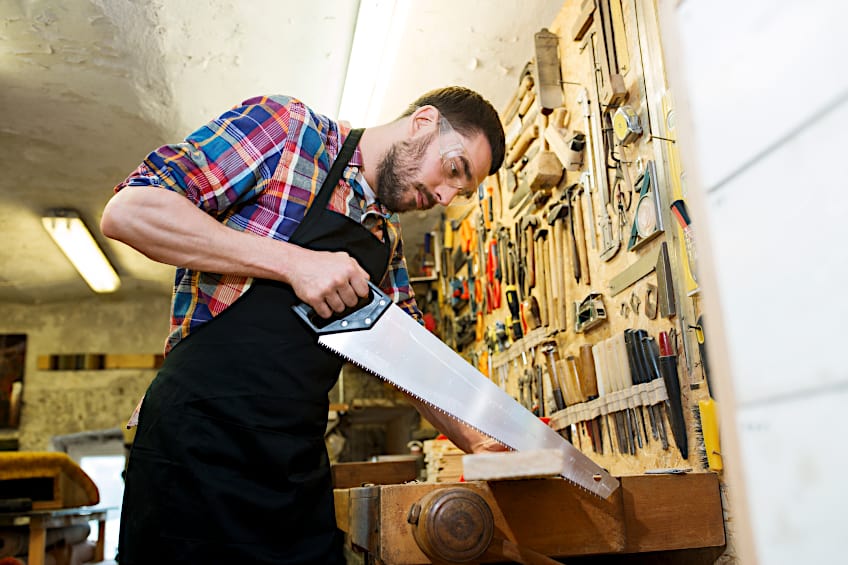
A good example of this is how the average height of workbenches used for handwork in occupations like planning, skimming, or wood carving is typically around 29 inches. This height allows for adequate leverage and weight distribution, ensuring that you steady your hands without having to focus on your balance. Plus, having a comfortable chair with an adjustable height function helps too.
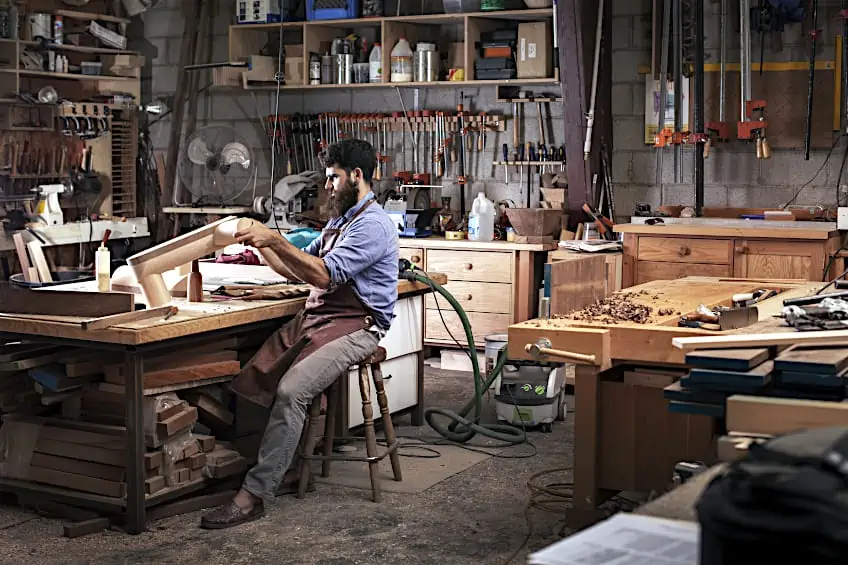
This height doesn’t work for all manner of woodwork, though. For more detailed work, the ideal height is a hit higher than this, typically at around 37 inches. This is usually for workpieces that are a bit larger and need a bit more space and maneuverability from the crafter when they are being worked on. This height isn’t ideal for everyone though, as some crafters do prefer a lower surface when working with larger workpieces.
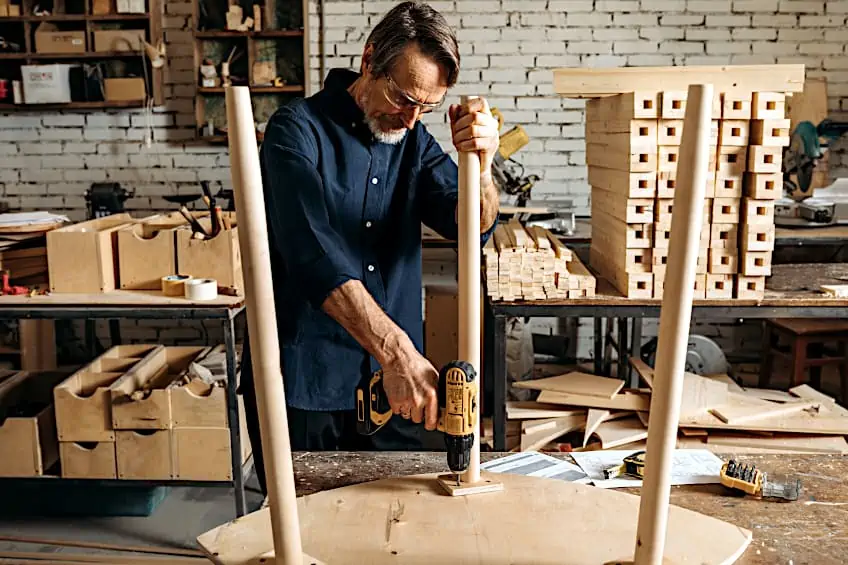
However, most people don’t prefer either of these workbench heights, instead opting to go for something in the middle. The most popular height for workbenches in both the professional and DIY wood crafting environments is around 34 to 36 inches, which is arguably a good middle ground for most wood-crafting disciplines and even other occupations like welding.
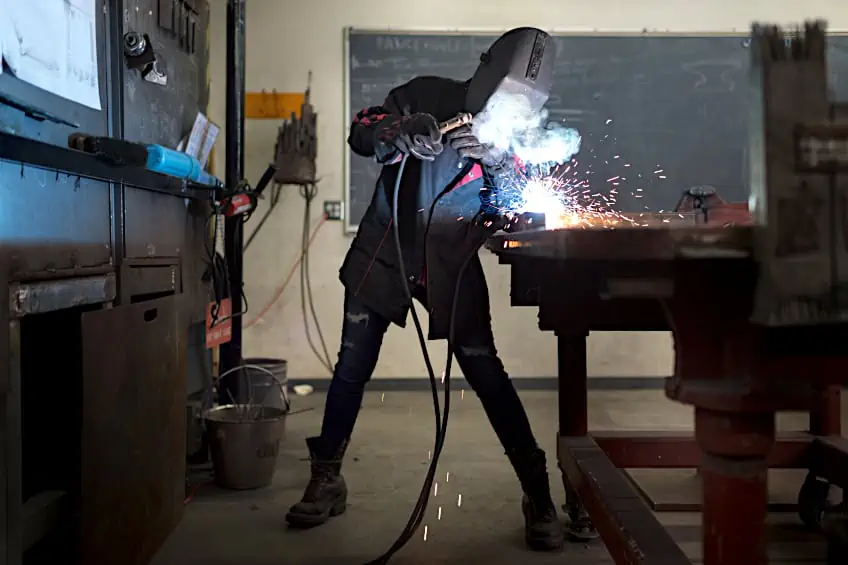
So, how tall should a workbench be? There are loads of things to take into account when it comes to choosing the height of your workbench, such as the width and length of your table, the average size of the workpieces you’ll have on it, your personal height, and how much space you have to work within the space the workbench will reside. How tall should a workbench be, then? As tall as you’d like! It’s completely subjective.
How to Find Your Ideal Workbench Height
When putting together your workspace, there are plenty of things that you need to acquire and set up. After all, you’ll need tools, sound insulation, heat insulation, extension cords, protection for your flooring, hangers and drawers for your tools, and lastly, your workbench. Choosing your workbench and its height is super important because it will be the cornerstone of your workspace and arguably the most permanent fixture in your professional life.
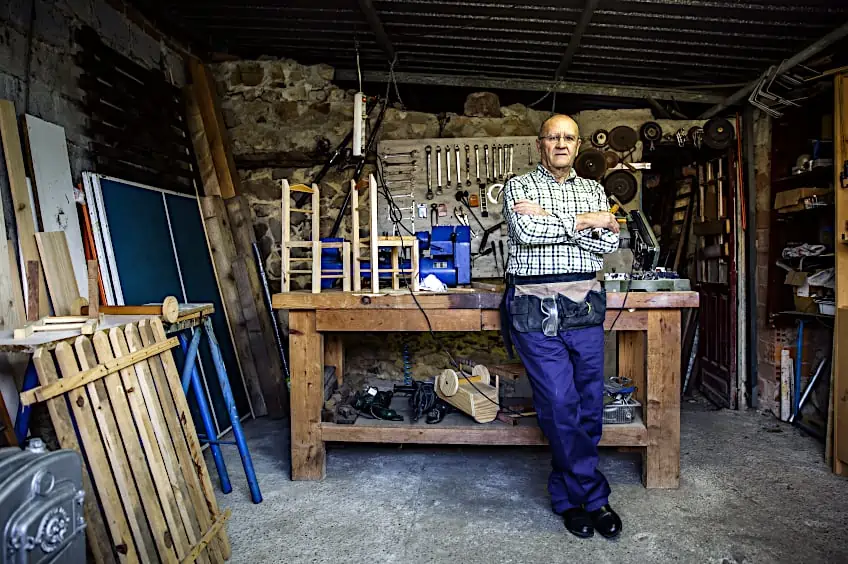
The last thing you want is to go through all the trouble of choosing, purchasing, transporting, and installing a workbench only to find out that you end up with an unbearable backache every time you use it. This being said, there are a few tips and tricks you can use to choose a workbench that is the correct height for you, so let’s have a look at a few of them.
Ideal Height for a Lower Handwork Workbench
We mentioned previously that the height of your workbench affects your leverage over certain tools and machinery. This leverage can have an effect on the control you have over your tools, which can ultimately affect the quality of your workpiece. So, if you’re working with hand tools and/or doing more detail-oriented work, you should do your best to ensure that the height of your table is relatively low.

Working with hand tools requires a stance that provides an overview of your workpiece, kind of like a top-down perspective but at a slight angle. This should allow you to use your elevation to your advantage while keeping an eye on the bigger picture, which is the ideal scenario when you’re planing or crafting something with hand tools.
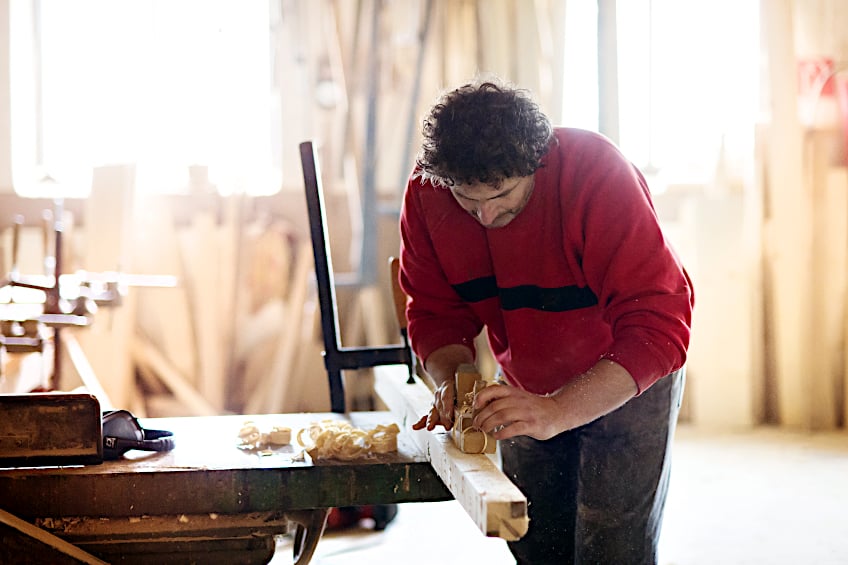
The ideal height for any bench that will be used for handcrafting things is roughly 30 inches. This height is ideal because it allows you to place your weight over the surface of the workbench, giving your much-needed traction and leverage over your tools. This can feel a bit small, but not quite like a kid’s table just yet.
A workbench of this height also means that you’ll be able to bend your knees if you’re adjusting your grip or planning at an angle, which should allow you to push, pull, and chip without relying entirely on your upper body. It allows you to use your glutes and core to assist in the action you’re performing.
Ideal Height for a Taller, Detail-Orientated Workbench
We mentioned previously that when you’re doing handwork, especially on a wooden workpiece, the ideal position to be in is one that places you higher than the workpiece. Well, as luck would have it, when working with a smaller workpiece that requires a keen eye and attention to detail, your workbench should be taller.

A slightly taller workbench means that your pectoral region is closer to the surface edge of the bench, which gives you the natural inclination to lean in. Since you won’t be heaving and pushing with your tools but rather working out finer design details, you don’t need the leverage, which means you don’t need to be over the workpiece, but rather near eye level.
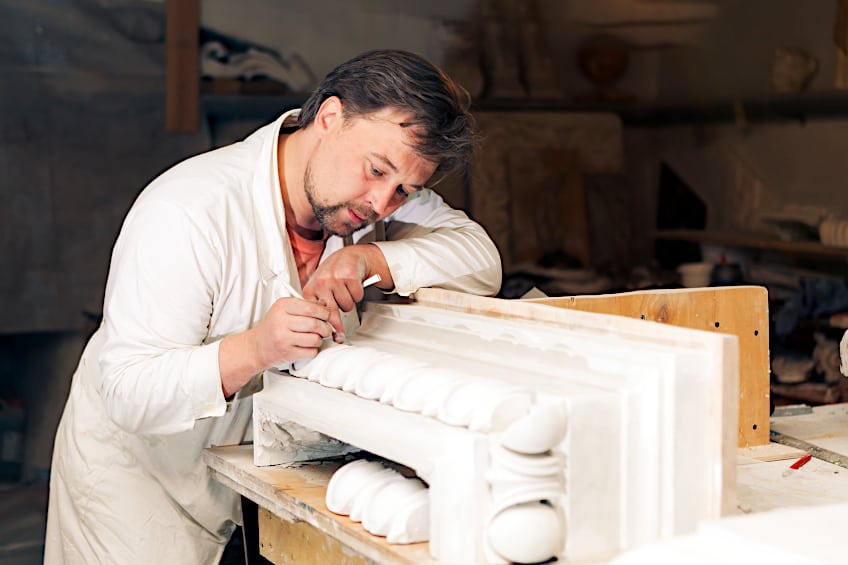
So what is that ideal height for a workbench dedicated to helping you achieve detailed work? Ideally, you’d want any workpiece between 30 inches and 37 inches, depending on your preference and personal height. The kind of material you’ll be working with can play a part in your decision making too, as more stubborn materials can require some more leverage to work with and therefore a lower bench height.
Essentially, you’d use a workbench of this height for any operation in which leaning over the workbench will not be needed or could pose a hazard to yourself or your workspace. This is why this particular height is used when machinery like grinding wheels, workbench vices, table saws, and miniature lathes are installed.
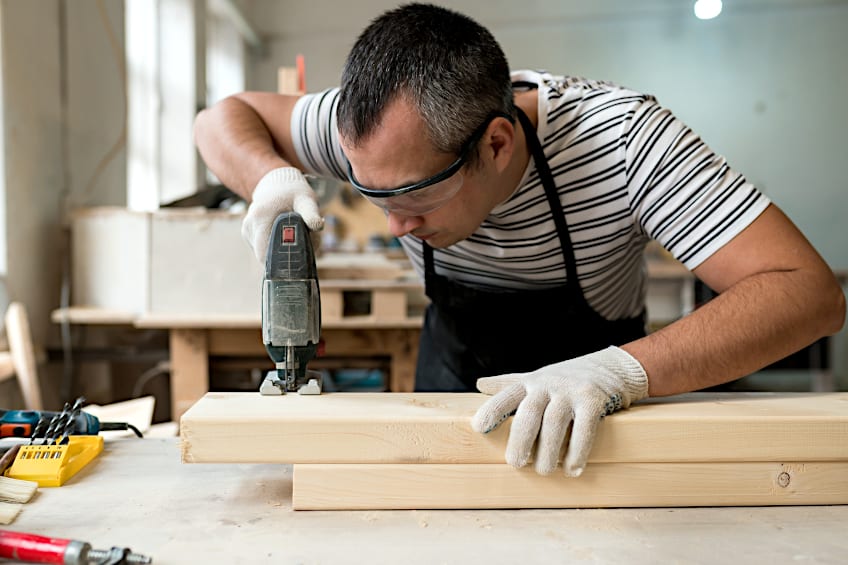
A common mistake when working with this height of workbench is thinking that you can achieve the same stance and leverage as you would with a shorter workbench. Attempting to use tools like miter saws or chisels at this height can be challenging and potentially dangerous, so consider what type of work you’ll be doing most before committing to this height of workbench.
Ideal Height for an Average Workbench
Like most things in life, moderation is often the best approach to a workbench. Professional wood crafters that specialize in one facet of wood-crafting might need a table that is exceptionally tall or exceptionally short, but the reality is that if you’re a DIY enthusiast or simply like having a workbench around for when you need to work on your car, you don’t need either of these.
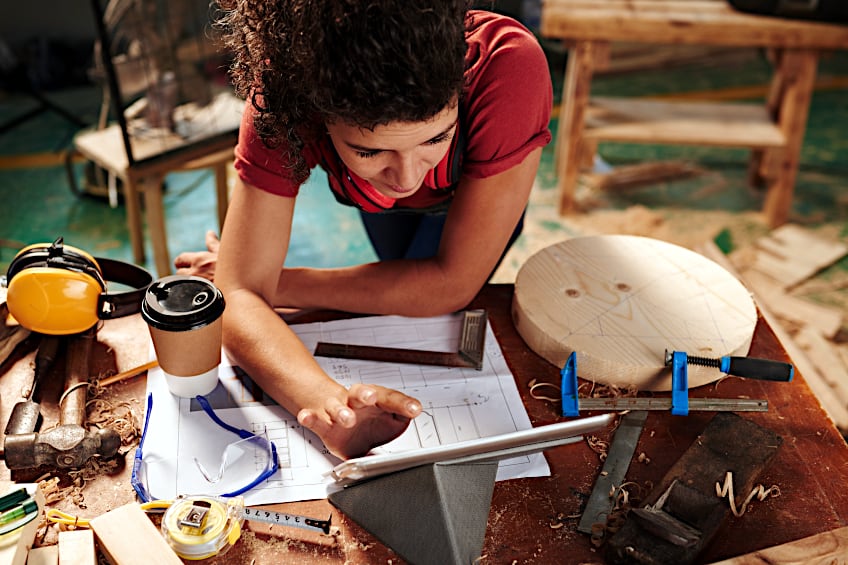
What you need is a workbench that is somewhere in between one that isn’t designed for one particular operation, one that can be used for pretty much anything that you need it to do. You need an average-sized workbench, but what is the average height of a workbench and why is it ideal for the everyday DIY enthusiast?
If you’re into woodwork as a hobby, you should consider getting a workbench that is between 34 inches and 36 inches in height. This is ideal for most American adults as it’s not too tall and not too short for most woodwork activities, which means you still have some leverage while not being leaned too far over the surface of the table.
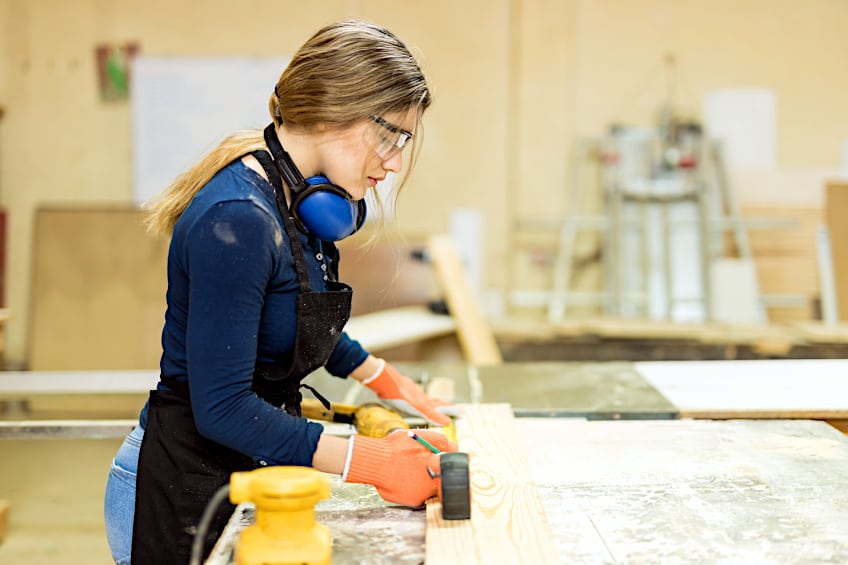
Besides, if you are working with limited space, you don’t have the room for more than one workbench to cater to every operation specifically. That’s why this average height workbench is the ideal bench for most at-home applications, and they can often handle the odd heavy-duty job if need be. This being said, it’s also the best value for money out of the three workbenches we’ve had a look at thus far.
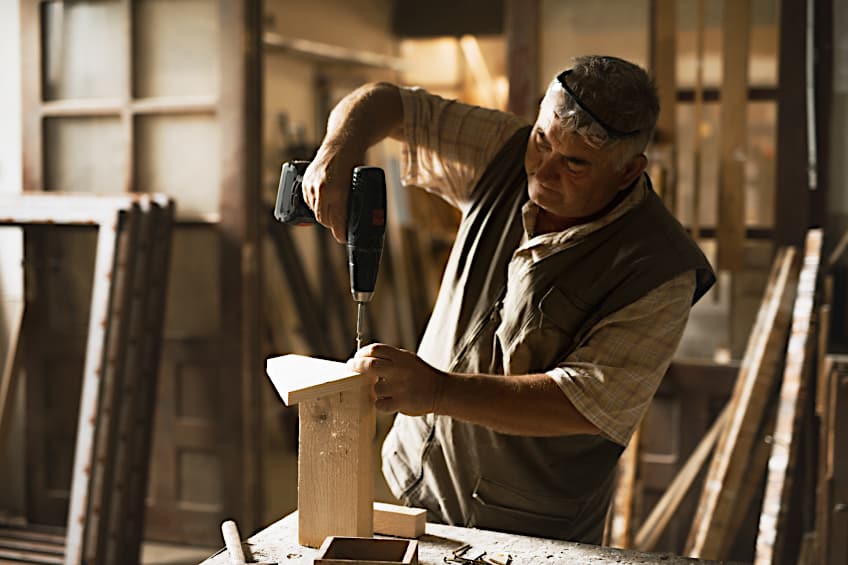
On the other hand, this does mean that if you ever find yourself needing to do some detail-oriented work, you will need to find a way to elevate the height of the table so that you have the ideal stance. This is because being too low down can cause some discomfort when standing still for long periods of time while you focus on your workpiece.
How to Choose the Best Workbench Height for You
Whether you’re a professional or just enjoy the odd DIY project, your workbench probably means a lot to you, and even if you don’t have one, you can see the importance of having one that’s just right for you and your work needs. So, why not make one yourself? This way, you’re not limited to the mass-produced tables sold at local hardware stores and you get to add your own personal touches.
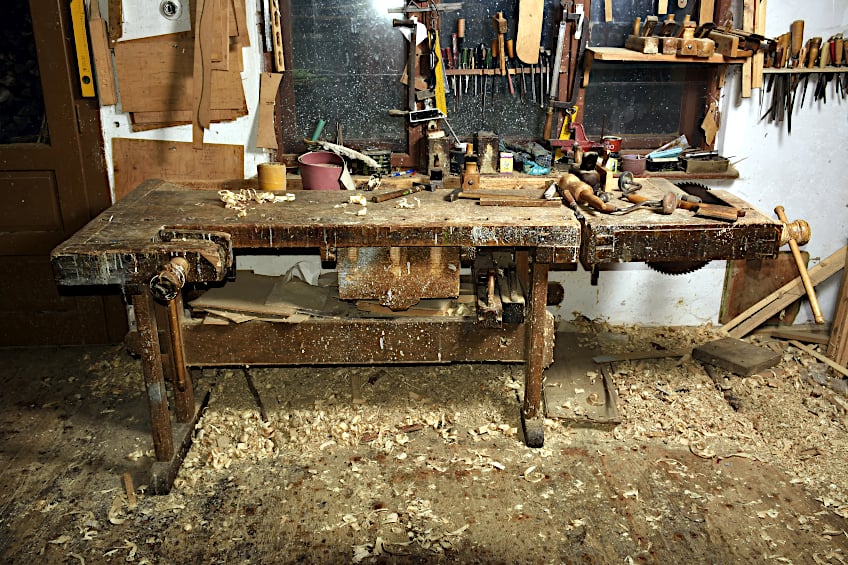
What Will Be You Doing Most of the Time?
This is arguably the most important factor to consider when selecting a workbench. A workbench should be tailored for what you need to do for the majority of the time you spend at it, or you’re just setting yourself up for a really uncomfortable time while chipping away at your latest project. If you’re working on detail-oriented work, and if you’re doing planning and cutting long wood boards, you should ensure that your workbench is low, as we mentioned previously.
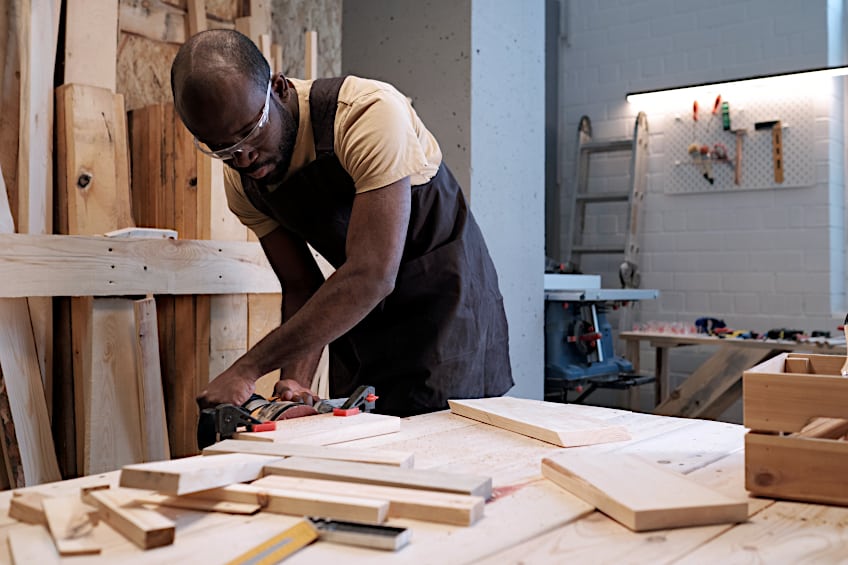
Take Your Dimensions into Consideration
Taking your dimensions into consideration is extremely important when selecting the height of your workbench. When we say dimensions, we don’t just mean your height – we mean your weight distribution, reach, and the length of your arms too. This can take a while, but it is well worth the effort considering that you’ll have the measurements for the ideal workbench for you once you’ve completed it.
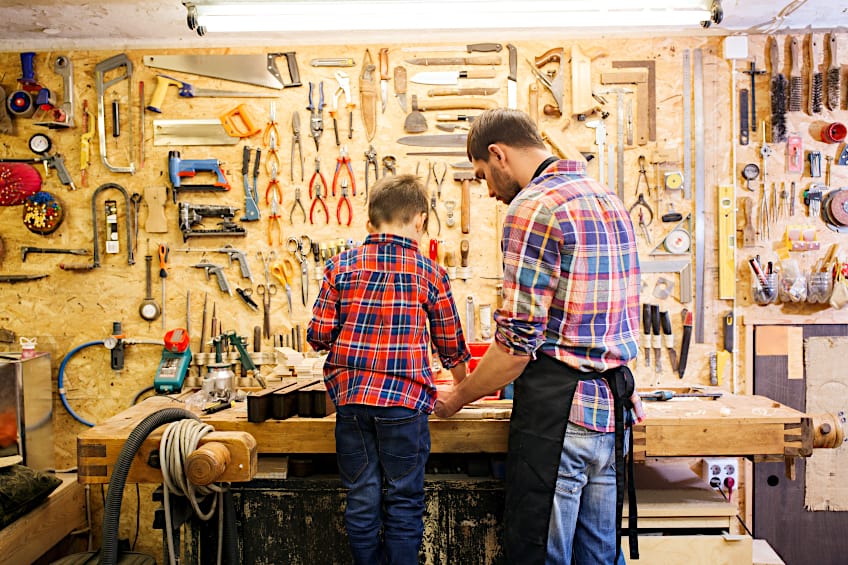
How do you do this, though? Well, if you’re creating a medium-sized workbench, you should measure from the surface of your floor to the crease of your wrists, as this is a pretty good midway point. If you’re creating a lower workbench, measure from the surface of your floor to the tips of your finger to get the ideal height for pushing your weight over the surface of the table.
If you’re in the market for a taller workbench, you’re going to need some help though. What you need to do is stretch your arms out so that they’re horizontal to your body, and once you’re in that position, have someone else measure from the surface of your floor to the bottom of your arms to get the ideal height for your workbench.
Consider Using Adjustable Legs
Remember that none of the heights we have mentioned previously are set in stone. You can always alter the height of your table by skimming the legs so that they’re the ideal height for you, or if your table is too short, you can add material to the legs of the table to raise it to your desired height. This is what’s cool about creating your own table – you aren’t limited by the pre-cut height.
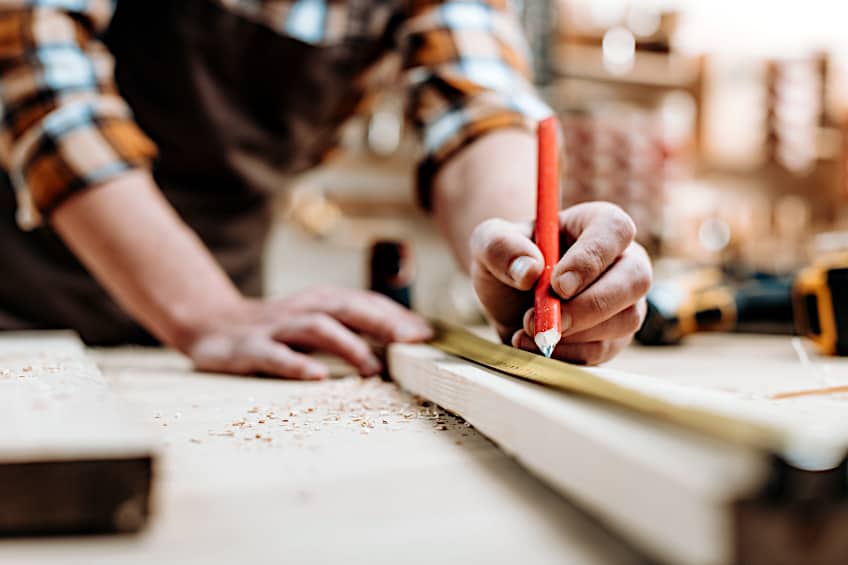
Using adjustable legs is another option. These are great if you’re going to be doing a little bit of everything but need to ensure that the results are always of the best possible quality. Finding adjustable legs for workbenches that are capable of handling weight and vibration can be tough, but if you manage to get your hands on them, you’ll pretty much never need another workbench again, especially if your surface is made of a durable material.
If you’ve never seen adjustable legs before, they’re essentially linked to the bottom of our table via butt hinges, which can expand and contract on demand. Fancier adjustable legs even use pneumatics and/or electronics to adjust the height of your table without you even needing to break a sweat! These can be really tricky to find and install, though.
Now that you know why the height of your workbench is so important, what the ideal height for your workbench is based on what you intend to do with it, what you should consider when choosing the height of your workbench, as well as why the height of workbenches vary, it’s time for you to get out there and out your newfound knowledge to the test. Remember to always work safely and to be realistic about the type of work you’ll be doing most often with your workbench.
View our Best Workbench Height web story here.
Frequently Asked Questions
What Is the Average Workbench Height?
The average workbench height in the US is around 37 inches from the ground. This height is ideal because it is not really tall but not really short either. It allows you to place your weight over the table somewhat while still allowing you to view your workpiece up close.
Should a Workbench Be Level?
Wondering if it’s important for the surface of your workbench to be level? Well, it is, but for more reasons than you might think. A level workbench means that your things won’t roll around on it, or off of it, and it means that you’ll be able to use your tools accurately with no potential risk to yourself.
Why Is the Height of Any Work Bench a Very Important Consideration?
The height of your workbench is important because it will either allow you to work more easily, or make your intended task more difficult. Taller workbenches are best suited for detailed-oriented wood crafting, while shorter ones are best suited for larger, more labor-intensive tasks.

I have been into woodworking since 2005 and woodturning since 2011. Because of my love for wood and woodworking, I started woodhappen.com to teach other enthusiasts about how to finish and seal wood, the best woodworking tools, the different types of wood, and everything else related to woodworking! Read more about me here.

